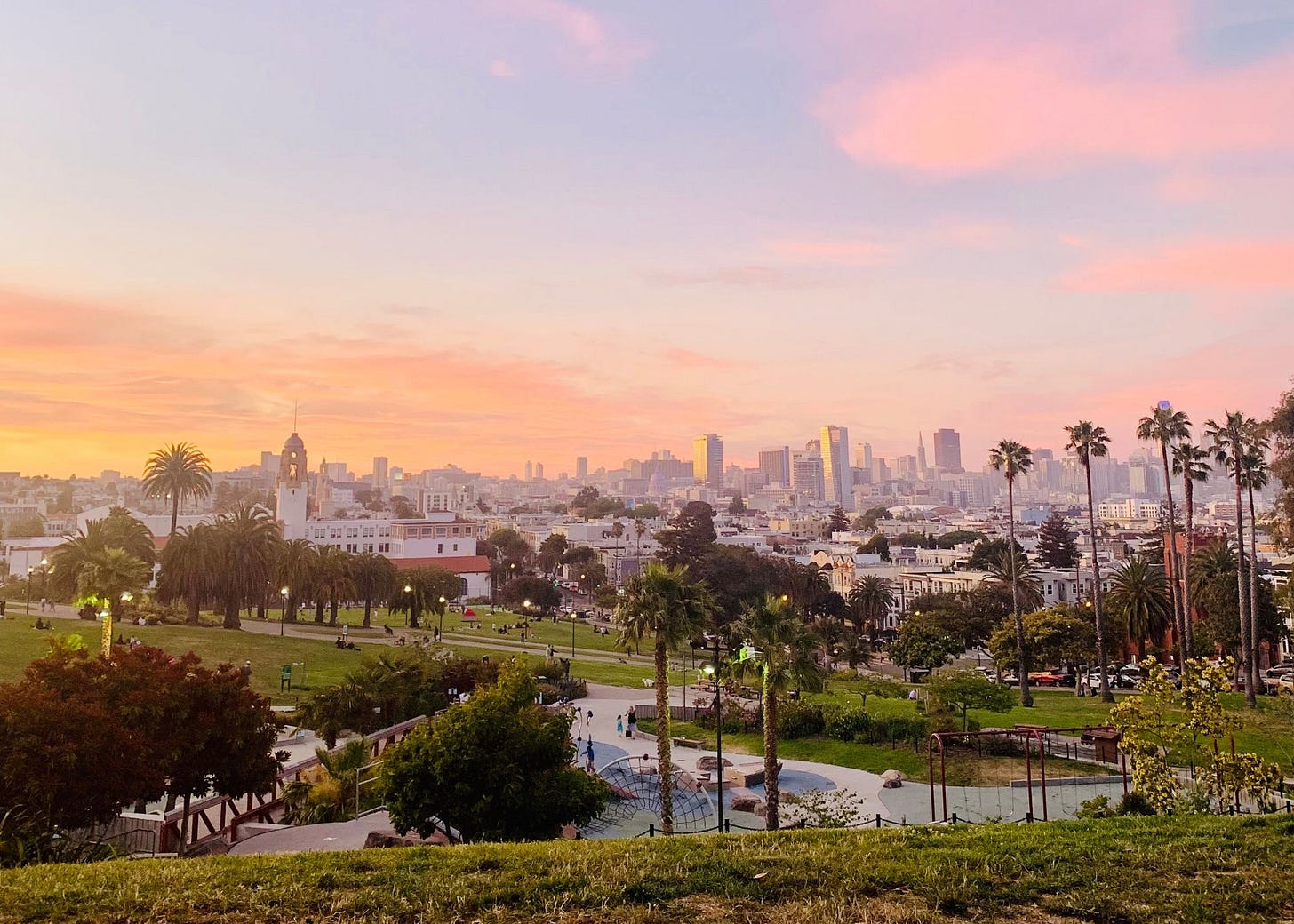San Francisco peaked in the early days of film noir. Its most hopeful moment was the mirror scene in Orson Welles’s film, The Lady from Shanghai. This was after the California Gold Rush but long before the fog lost its romance and became a source primarily of urban annoyance.
Back then, the city’s mystique was freshly cinematic. Something about how it had vagabonds passed out drunk outside brothels. European visitors thinking they were in the right place for opium and cheap prostitutes. Also the Golden Gate Bridge was quite new.
The Golden Gate Bridge: opened 1937. Longest and tallest suspension bridge in the world.
The Lady from Shanghai, released ten years after the bridge: 1947.
The city peaked again during the so-called dot-com boom when tech companies infiltrated, erected high-rises, made money, lost it, and made it again.
I don’t want to forget the Barbary Coast peak. That was a great peak. A peak we still recall with a street name, some plaques, and North Beach strip clubs, still seedy after all these years.
If you’re a junky, the fentanyl peak of the mid 2020s was a peak to remember.
Odd to think, isn’t it, that the city was once a real town, not a museum, a theme park. In 1848, it was a settlement of 1,000 residents. When the Gold Rush happened, beginning in 1849, the population quickly bloomed. People came from all over, jumped off their ships and headed for the hills to find treasure. The abandoned ships piled up in the harbor until they were eventually covered over to create new land for the city’s downtown.
A strange place, but a real town.
In modern times, we’re left with portals into these many peaks. Each peak is still out there, if you know where to look. If you’ve got the right ticket. If you’ve got the time.
The best way to judge a city, they say, is by the portals it offers.




